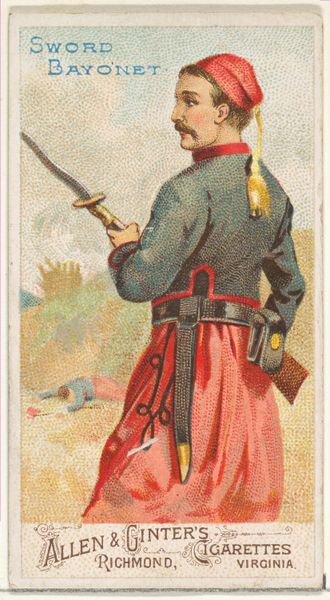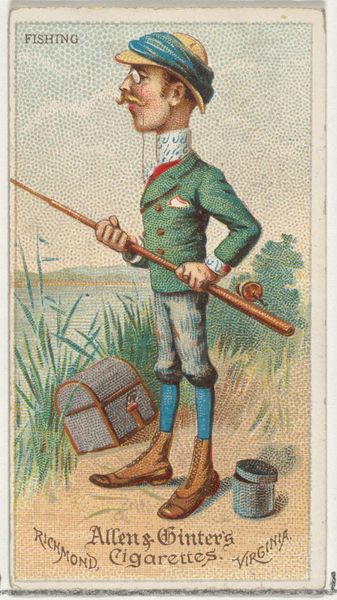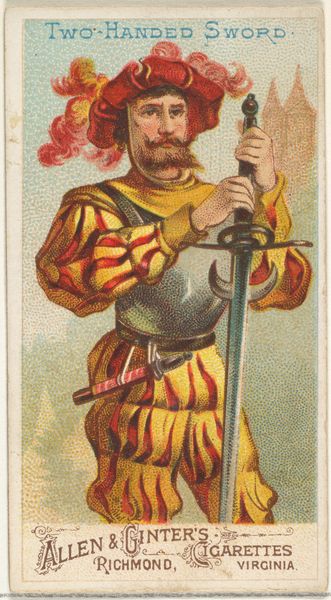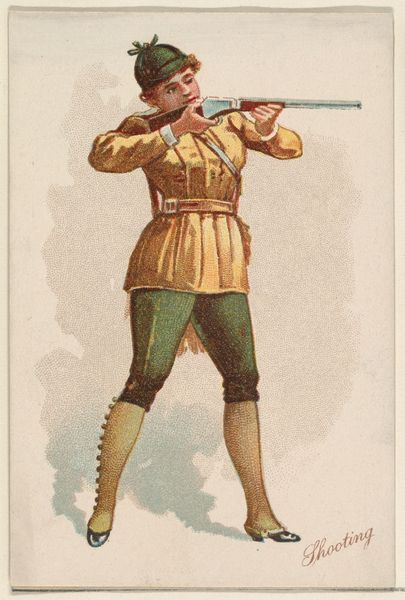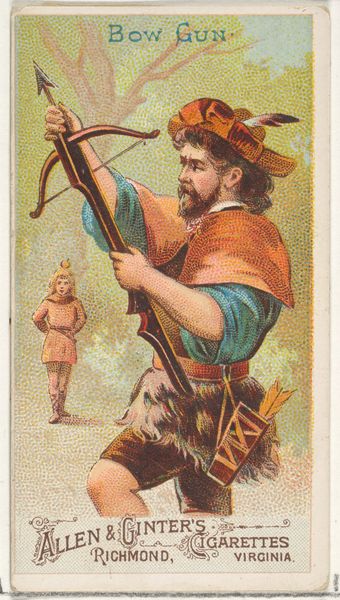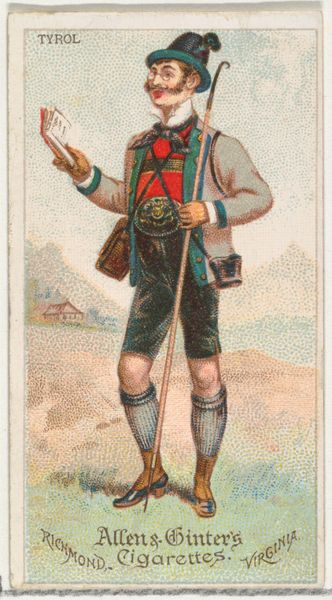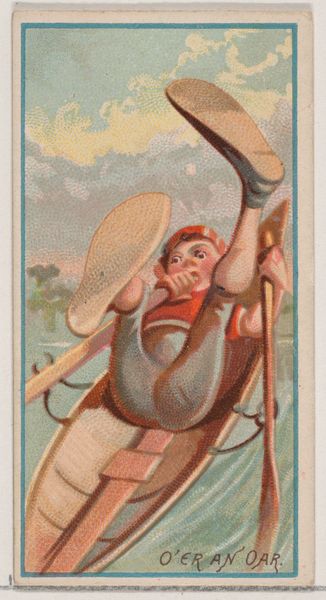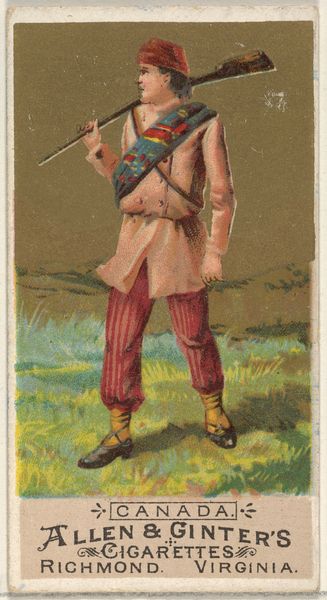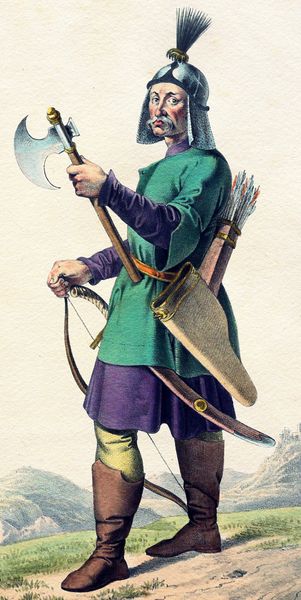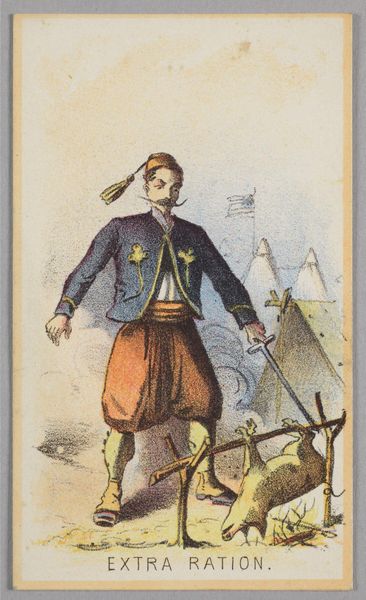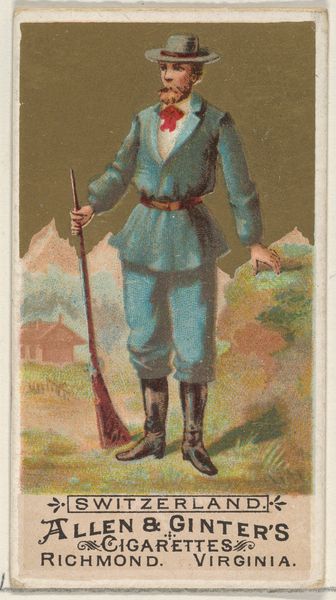
Crossbow, from the Arms of All Nations series (N3) for Allen & Ginter Cigarettes Brands 1887
0:00
0:00
drawing, coloured-pencil, print, watercolor
#
drawing
#
coloured-pencil
# print
#
caricature
#
watercolor
#
coloured pencil
#
men
#
watercolour illustration
Dimensions: Sheet: 2 3/4 x 1 1/2 in. (7 x 3.8 cm)
Copyright: Public Domain
Editor: Here we have “Crossbow, from the Arms of All Nations series” made in 1887 by Allen & Ginter. It’s a drawing composed of coloured pencil, watercolor and print. What jumps out at me is the rather theatrical costuming; it's almost like a caricature. How do you interpret this work? Curator: That’s a great initial read. I see this card as a window into the cultural anxieties and fascinations of the late 19th century. Allen & Ginter were cigarette manufacturers who produced these cards as collectables. But what’s crucial here is the series' title: "Arms of All Nations." Who is ‘all nations’ for them? What kind of national identity is being manufactured through these collectible cards? And, for whom? Editor: So, it's not just about crossbows, it's about a broader cultural project. Curator: Exactly. Think about the role of colonialism at this time. These images romanticize weaponry and exoticize different cultures, placing them within a hierarchy implicitly headed by the Western world. The crossbow here becomes less about medieval warfare and more about a projection of power and a specific kind of global dominance. Editor: It makes you wonder about the consumer, doesn't it? Like, what were they meant to think about the world looking at this? Curator: Precisely. Were they seeing an accurate representation or a romanticized ideal that perpetuated existing power structures? This card then becomes an active participant in constructing a world view steeped in colonialism. What do you make of the way the figure is rendered? Editor: I noticed his face seems pretty neutral, even docile, almost at odds with the weapon he's holding. Curator: And perhaps that disarming quality serves to further normalize the violence inherent in the image. By downplaying any sense of threat, it subtly reinforces the idea of Western dominance as natural and benign. Editor: I hadn't thought about it that way. Now I see how seemingly innocuous images like this can be loaded with ideological meaning. Curator: Exactly. By dissecting these historical images, we can understand how systems of power get naturalized, even through something as seemingly harmless as a cigarette card. Editor: This was really helpful, I’ll never look at collectable cards the same way!
Comments
No comments
Be the first to comment and join the conversation on the ultimate creative platform.
